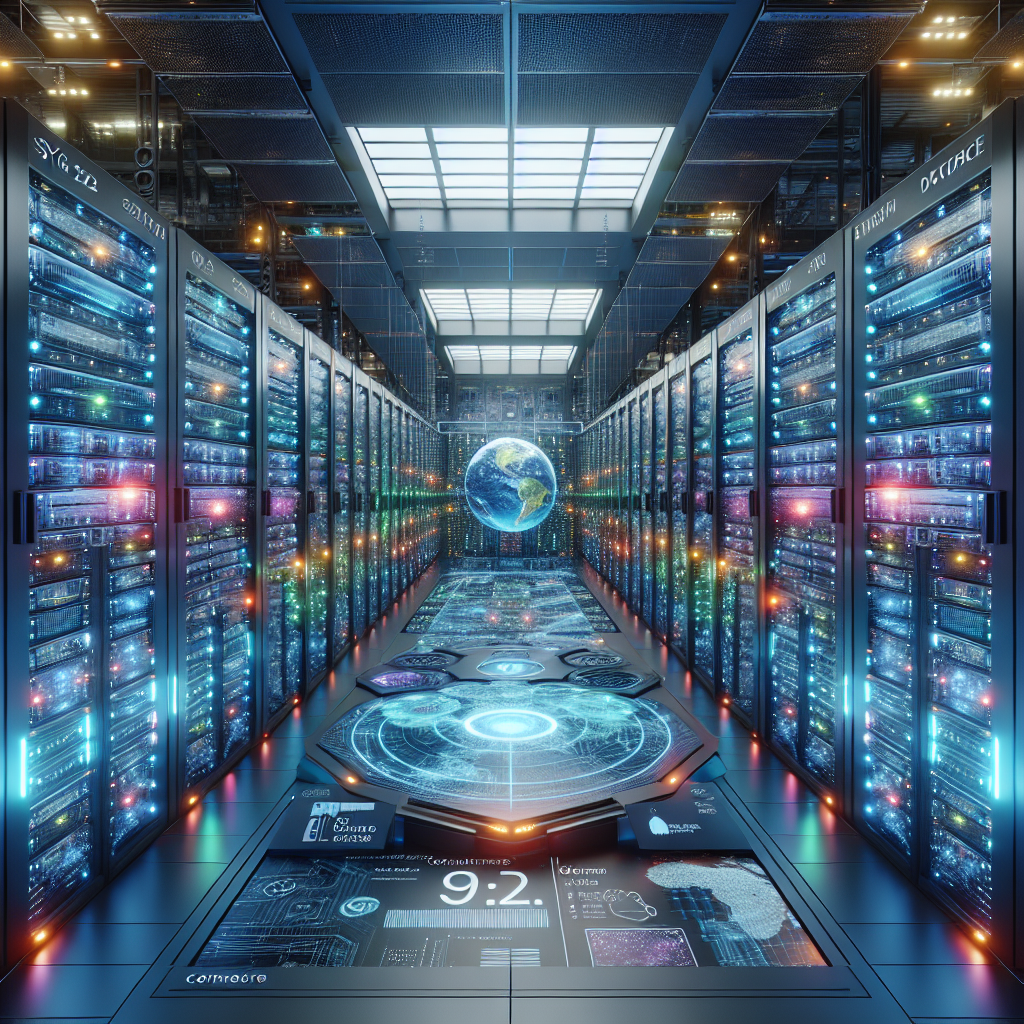AI August 2025: GPT-5, Open Source LLMs, and the Race for AI Dominance
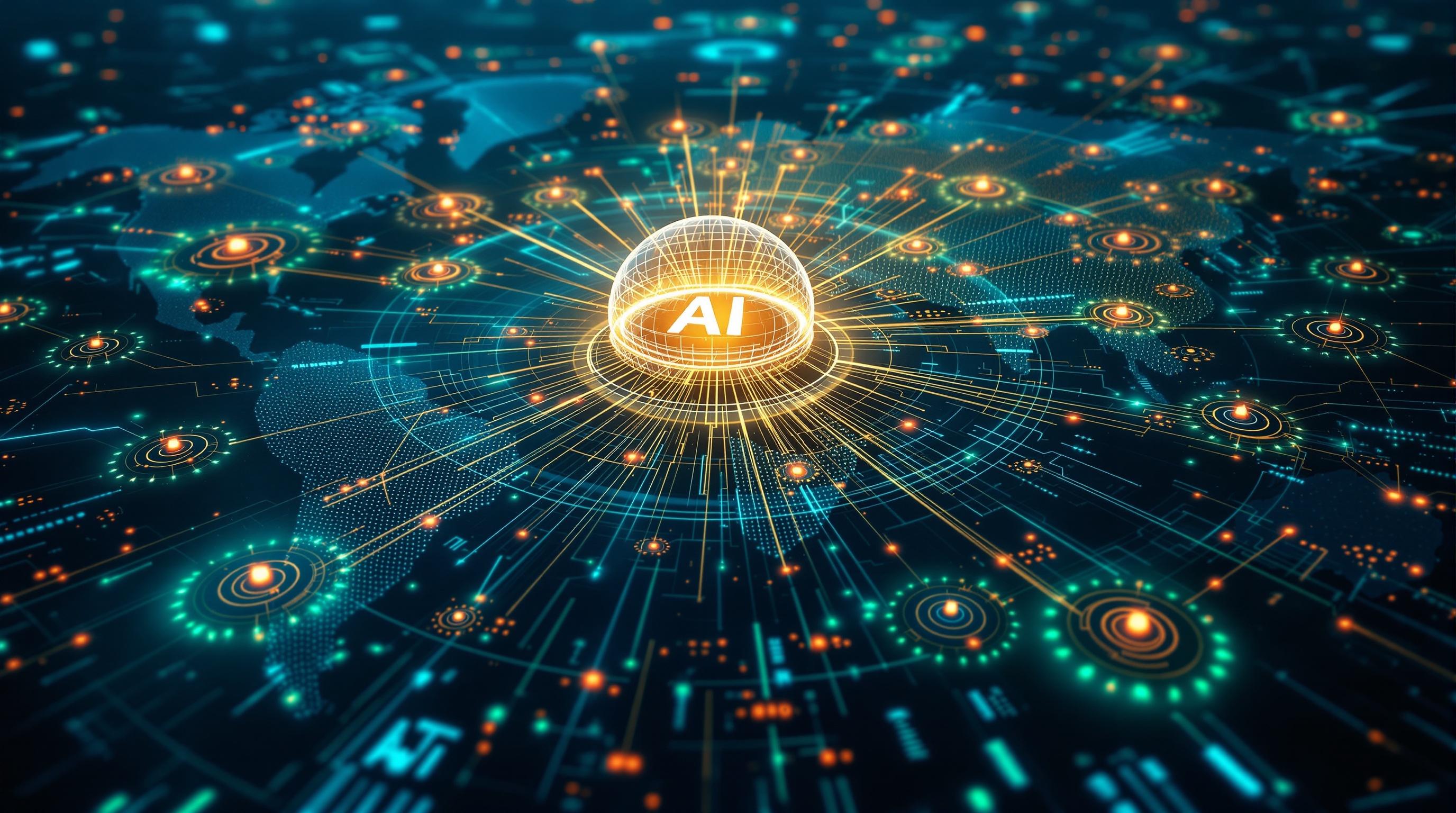
Swedish industrial giants are uniting to build a national AI infrastructure, signaling a strategic move to boost Sweden's competitiveness in the AI landscape and offering a model for other nations to follow. To stay competitive, businesses must recognize AI as a fundamental pillar, and can start by exploring how national consortiums are fostering domestic innovation and expertise. This initiative highlights a growing understanding that AI isn't just a technological advancement, but a fundamental pillar of national competitiveness.
Swedish Industrial Giants Unite to Forge National AI Infrastructure
Imagine Sweden, not just as the land of IKEA and ABBA, but as a burgeoning hub for artificial intelligence, powered by a unique national initiative.
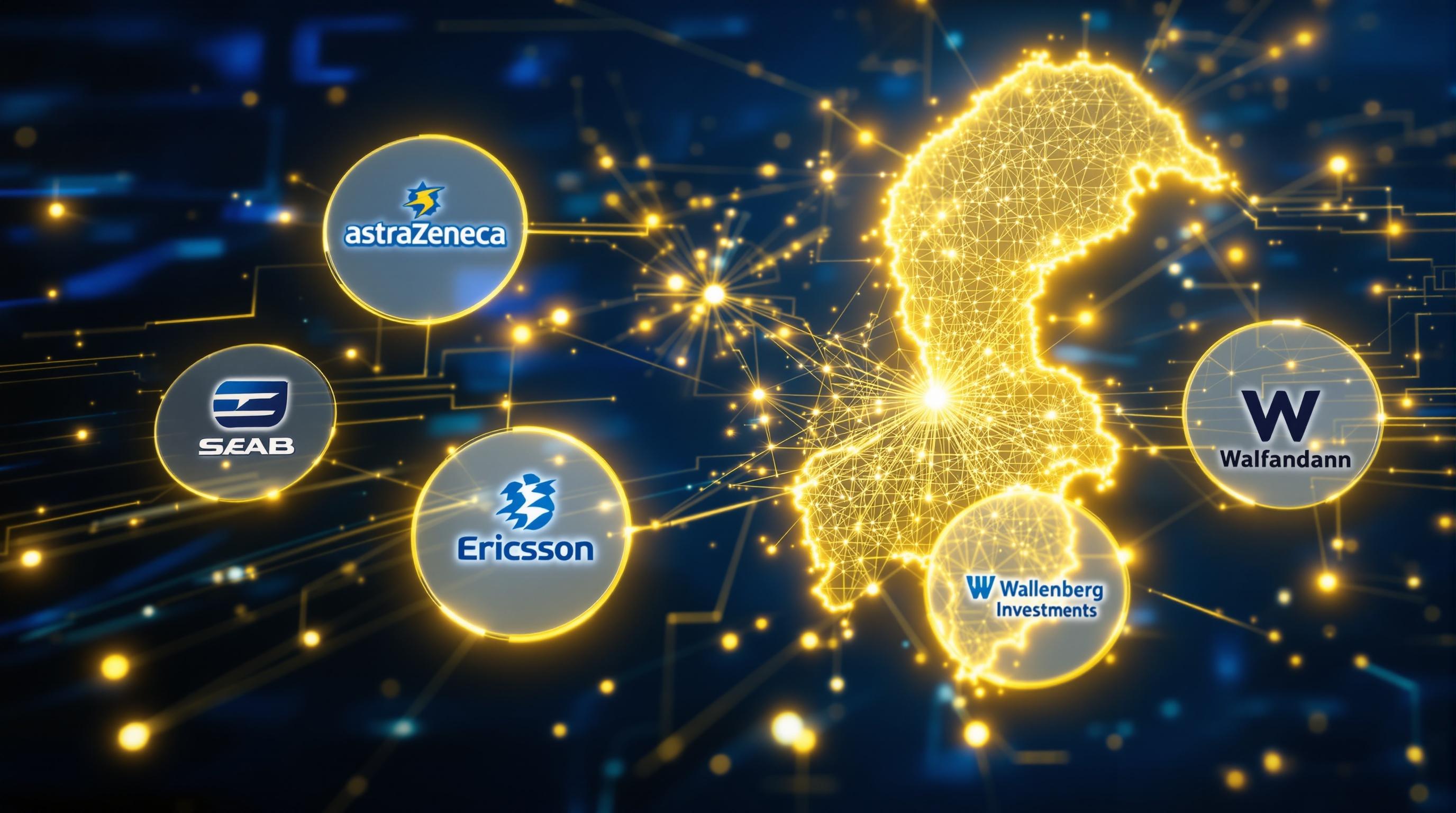
A Swedish AI Alliance
In a move signaling serious intent, a consortium of Swedish industrial giants – AstraZeneca, Ericsson, Saab, SEB, and Wallenberg Investments – has launched a joint AI venture. This isn't just a casual partnership; it's a strategic alliance aimed at forging a robust national AI infrastructure tailored for Swedish enterprises. These companies, each a leader in their respective fields, are pooling resources and expertise to ensure Sweden remains competitive in the rapidly evolving AI landscape. This is especially important, given the rapid advancements discussed daily in AI News.
Scandinavia's Enterprise AI Ambitions
This initiative underscores Scandinavia’s broader ambition to emerge as a leader in enterprise AI and digital transformation. The Nordic countries have long been at the forefront of technological innovation, and this concerted effort in AI is a natural extension of that legacy. By focusing on enterprise-level solutions, Sweden aims to equip its businesses with the tools they need to thrive in the age of AI. This will be powered by advancements from tools like Google Gemini, an advanced AI model designed to be multimodal, and thus versatile for many enterprise tasks.
The Rise of National AI Consortiums
The Swedish initiative is part of a growing trend: the emergence of national consortiums as key players in AI infrastructure. Across the globe, governments and conglomerates are recognizing the strategic importance of AI and are taking proactive steps to build their own AI capabilities. This trend reflects a shift away from relying solely on external AI solutions and towards fostering domestic innovation and expertise. Consider also the role of open-source LLMs such as Deepseek which is also being leveraged for custom AI applications. By building their own infrastructure, nations can ensure greater control over their AI development and deployment, while also addressing concerns around data privacy and security.
This move highlights a growing understanding that AI isn't just a technological advancement, but a fundamental pillar of national competitiveness.
Governments and Conglomerates: Building AI Independence
We're seeing governments worldwide invest heavily in AI research and development, creating national AI strategies, and fostering public-private partnerships. Similarly, large conglomerates are establishing dedicated AI divisions or acquiring AI startups to integrate AI into their core operations. This dual approach – top-down government support and bottom-up corporate innovation – is crucial for building a comprehensive and sustainable AI ecosystem. Even universities are getting involved, such as the development of Hugging Face, which serves as a community and platform for advancing AI. The goal is not just to adopt AI, but to shape its development and ensure it aligns with national interests and values.
The formation of this Swedish AI infrastructure initiative is more than just a local story; it's a microcosm of the global race for AI dominance, where national strategies and collaborative efforts are becoming increasingly critical. This drive is further amplified by the need for skilled experts in Prompt Engineering, necessary to get the most out of modern AI tools. As AI continues to permeate every aspect of our lives, expect to see more of these national-level initiatives emerge, each vying for a piece of the AI pie.
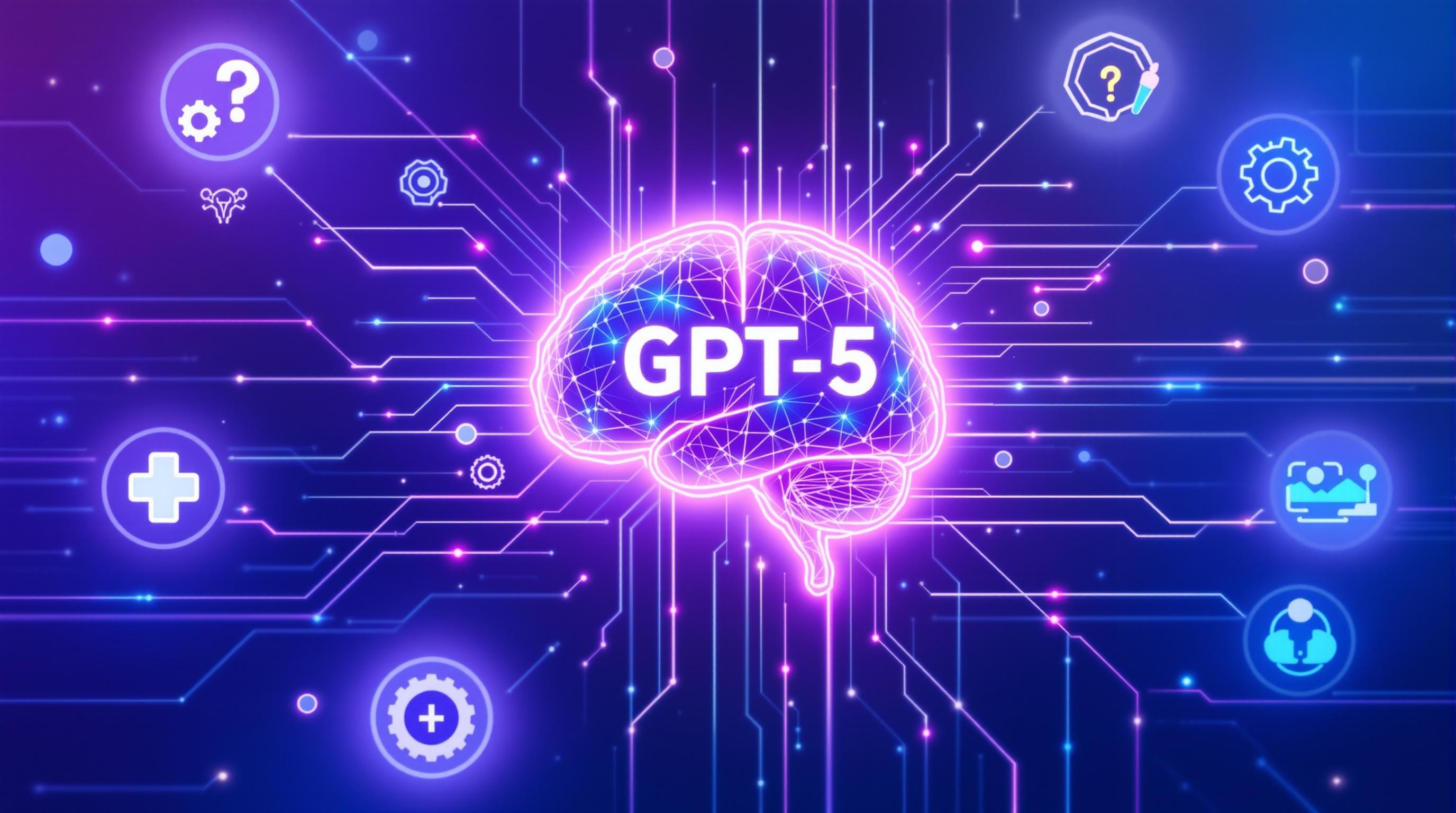
GPT-5 Arrives: OpenAI's New Model Redefines AI Capabilities
Just as the summer heat reaches its peak, OpenAI drops a bombshell: GPT-5 has arrived, and early reports suggest it's not just an upgrade, but a leap. The buzz is palpable – many are calling it a pivotal moment, potentially marking a significant stride toward Artificial General Intelligence (AGI). This claim isn't just marketing hype; it’s fueled by the model’s unprecedented capabilities in reasoning, problem-solving, and creative output.
The Dawn of Expert-Level AI
GPT-5 isn't just smarter; it's operating at an entirely different level of expertise. Forget simple Q&A – we're talking about a system capable of providing expert-level responses across a vast range of disciplines. Imagine asking it to diagnose a complex medical condition, develop a comprehensive marketing strategy, or even write a symphony – GPT-5 can not only handle these tasks, but do so with a level of nuance and understanding previously unseen in AI.
This isn't just about generating text; it's about understanding context, applying knowledge, and synthesizing information in ways that mimic human expertise.
Its problem-solving abilities are equally impressive. GPT-5 can tackle complex challenges that require abstract thought, logical reasoning, and creative brainstorming. This opens up a world of possibilities for businesses, researchers, and individuals looking to leverage AI to overcome obstacles and achieve their goals.
Under the Hood: Power and Performance
So, what makes GPT-5 tick? Two key features stand out:
Massive Context Window: With a staggering 256,000-token context window, GPT-5 can process and retain far more information than its predecessors. This allows it to understand complex relationships, maintain context over longer conversations, and generate more coherent and nuanced responses. Think of it as having an enormous working memory, enabling it to juggle multiple ideas and details simultaneously.
Blazing-Fast Output: No one likes waiting, and GPT-5 delivers. OpenAI has significantly optimized the model for speed, resulting in output that is noticeably faster and more responsive. This is crucial for real-time applications, such as customer service chatbots and interactive learning tools.
The ChatGPT Phenomenon Continues
The impact of GPT-5 is amplified by the continued success of ChatGPT, the conversational interface that has brought AI to the masses. As of August 2025:
700 Million Weekly Active Users: ChatGPT has become a ubiquitous tool for communication, information retrieval, and creative expression, with a user base that rivals some of the world's largest social networks.
$12 Billion Annual Revenue: OpenAI's revenue has doubled in the past year, driven by the popularity of ChatGPT and the growing demand for its enterprise AI solutions.
This success has not gone unnoticed by investors, who have driven OpenAI's valuation to a staggering $500 billion. This figure underscores the immense potential of AI and OpenAI's position as a leader in the field.
Creative Reasoning: Achieving Gold Medal Status
One of the most exciting aspects of GPT-5 is its ability to demonstrate creative reasoning at a level that rivals human experts. Imagine an AI capable of not just understanding the rules of a game, but also devising novel strategies and tactics to win. Or an AI that can not only analyze a piece of art, but also articulate its meaning and significance in a way that is both insightful and original.
This isn't just about regurgitating information; it's about generating new ideas, making unexpected connections, and pushing the boundaries of human knowledge.
This ability to think creatively has profound implications for fields such as art, music, literature, and scientific discovery. GPT-5 could become a powerful tool for artists, musicians, writers, and researchers looking to explore new ideas and push the boundaries of their respective fields. You can use the model in conjunction with Adobe Photoshop AI, Canva Magic Studio, and Adobe Firefly.
2025: The Year AI Went Mainstream
Looking back, 2025 may well be remembered as the year AI truly entered the mainstream. With the release of GPT-5, AI has moved beyond simple automation and data analysis to become a powerful tool for creativity, innovation, and problem-solving. As AI continues to evolve, it's crucial to stay informed about the latest advancements and explore how these technologies can be used to improve our lives and shape the future. Keeping up to date on the most important advances can be done by reading AI News articles. But how do we measure such a monumental leap? Let's dive into GPT-5's performance benchmarks and see exactly where it shines.
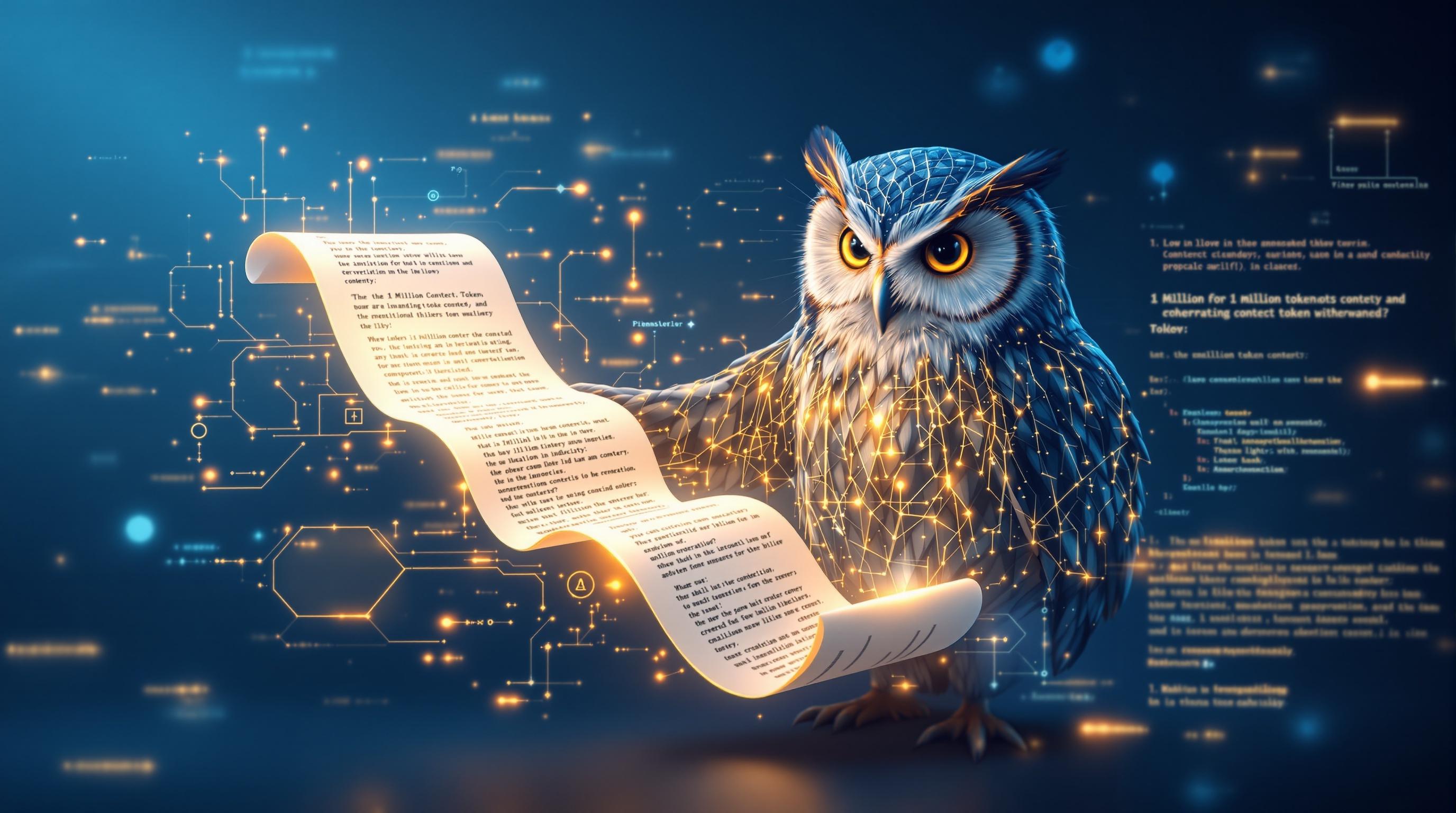
Anthropic's Claude Shatters Limits with Massive Context Window
Just when we thought we'd seen it all, Anthropic throws down the gauntlet, redefining what's possible with context in generative AI.
Claude's Unprecedented 1 Million Token Context Window
Anthropic, the AI safety-focused company behind Claude, has dramatically expanded its AI model's context window to a staggering 1 million tokens. To put that into perspective, it's like giving Claude the ability to ingest and remember the entire Lord of the Rings trilogy, plus a hefty textbook on advanced physics, all at once. This isn't just an incremental improvement; it's a quantum leap in the capabilities of large language models.
Unlocking New Possibilities: This massive context window enables users to input incredibly large documents, opening up possibilities previously confined to the realm of science fiction. Imagine feeding an AI the entirety of your company's legal contracts, a massive research paper, or even an entire codebase. The implications are profound.
From Books to Codebases: With this expanded capacity, users can now input entire books, extensive research papers, or even massive codebases into Claude. This allows for deeper analysis, more comprehensive summarization, and a more nuanced understanding of complex information.
Transforming Professional Workflows
The move towards larger context windows isn't just about bragging rights; it's about practicality. A million-token context window has the potential to revolutionize professional workflows in various fields:
Software Analysis: Imagine being able to feed an entire software project into an AI and ask it to identify potential security vulnerabilities or suggest optimizations. This could dramatically speed up the development process and improve software quality.
Research: Researchers can now analyze vast amounts of data and literature with unprecedented speed and efficiency. Perplexity, for instance, provides a powerful AI-driven search and research tool that could be used in conjunction with Claude for even deeper insights.
Legal Processing: Lawyers can use AI to review massive amounts of legal documents, identify relevant precedents, and draft legal arguments more efficiently. The ability to process this scale of legal information can significantly cut down on research time and improve accuracy.
This isn't just about processing more data; it's about understanding complex relationships and extracting meaningful insights from vast amounts of information.
The Generative AI Practicality Race
Anthropic's move underscores a growing trend in the AI world: the race for practicality. While flashy demos and impressive benchmarks are attention-grabbing, the real value of AI lies in its ability to solve real-world problems and improve existing workflows. By focusing on expanding the context window, Anthropic is directly addressing a key limitation of current AI models and making them more useful for a wider range of applications. This announcement puts pressure on companies like OpenAI and Google to innovate and improve the context handling abilities of models like ChatGPT and Google Gemini, respectively. The developments in AI News are happening at a breakneck pace, and this is certainly one of the more exciting advancements.
Anthropic Claude Million-Token Context: A New Era
With Claude's expanded context window, we're entering a new era of AI-powered information processing. This technology promises to transform how professionals in science, code, and law approach their work, accelerating discovery and enhancing productivity. The ability to handle such large amounts of data is not just a technical achievement; it's a game-changer for anyone looking to leverage AI for complex problem-solving. As AI continues to evolve, it will be interesting to see which tasks it will master next.
AI Everywhere: Microsoft, Google, and Salesforce Double Down on AI Integration
The summer of 2025 is witnessing a full-blown AI infusion into the core offerings of tech giants, signaling a monumental shift in how businesses operate and individuals interact with technology. We’re not just talking about experimental features anymore; AI is rapidly becoming the very backbone of productivity, creativity, and strategic decision-making, particularly as companies like Microsoft, Google, and Salesforce aggressively expand their AI integrations.
Microsoft: GPT-5 Everywhere
Microsoft is leading the charge by weaving GPT-5 into virtually every corner of its ecosystem. Imagine the possibilities now that the power of OpenAI's most advanced model is directly accessible from your everyday tools:
Azure: Developers can leverage GPT-5's capabilities to build next-generation AI applications, benefiting from enhanced performance, scalability, and fine-tuning options. Azure Machine Learning is now the go-to platform for companies looking to deploy custom AI solutions, offering a comprehensive suite of tools for data scientists and AI engineers.
Microsoft 365 Copilot: Say goodbye to tedious tasks and hello to AI-powered assistance. GPT-5 enhances Microsoft Copilot's ability to summarize documents, generate email drafts, create presentations, and even automate complex workflows. It’s like having a super-efficient digital assistant embedded directly into your favorite productivity apps.
GitHub Copilot: Coding has never been so intuitive. GitHub Copilot, already a game-changer, now benefits from GPT-5's enhanced code generation, debugging, and documentation capabilities. Junior developers can learn faster, while experienced programmers can offload repetitive tasks and focus on high-level problem-solving.
Bing Chat: The search experience is being redefined with smarter, more conversational interactions. Bing Chat, now powered by GPT-5, understands complex queries, provides nuanced answers, and even generates creative content like poems, code, scripts, musical pieces, email, letters, etc. You can brainstorm ideas, get step-by-step instructions, and explore new topics in a more engaging and informative way.

Google: Embracing Open Source with Vertex AI
While Microsoft doubles down on its partnership with OpenAI, Google is taking a more open approach, particularly within its cloud platform. Google Cloud AI is expanding Vertex AI to seamlessly support a wider range of models, including Meta's Llama 2. This move signals Google’s commitment to providing flexibility and choice to its customers. By integrating Llama 2, Vertex AI empowers businesses to:
Develop custom AI solutions that are tailored to their specific needs.
Leverage the power of open-source models while benefiting from Google Cloud’s robust infrastructure and security features.
Avoid vendor lock-in and maintain greater control over their AI strategy.
Salesforce: AI Your Way with Einstein Studio
Salesforce is democratizing AI for businesses with the launch of "Einstein Studio." This groundbreaking platform empowers companies to bring their preferred AI models—whether they're custom-built or pre-trained—directly to their Salesforce Platform data.
Einstein Studio allows businesses to:
Unleash the power of AI on their customer relationships, sales processes, and marketing campaigns.
Gain deeper insights, automate tasks, and personalize customer experiences at scale.
Maintain data privacy and security by processing data within the secure Salesforce environment.
The New Normal: AI-Infused Everything
This aggressive push towards AI integration highlights a fundamental truth: AI is no longer a luxury, it's a competitive necessity. Businesses that fail to embrace AI risk falling behind in terms of productivity, innovation, and customer engagement. The rapid evolution of productivity and workflow tools is being propelled by AI, placing it squarely at the center of routine business processes.
As AI becomes more deeply embedded into our daily lives, the ability to effectively leverage these tools will become a critical skill for individuals and organizations alike.
From automating mundane tasks to unlocking new insights and driving personalized experiences, AI is transforming the way we work, live, and interact with the world around us. The convergence of AI and cloud platforms represents a pivotal moment in the history of technology, ushering in an era of unprecedented possibilities. As we move further into 2025, expect to see even more innovative AI tools and applications emerge, further blurring the lines between human and machine intelligence. Staying informed via AI News is the best way to keep up.
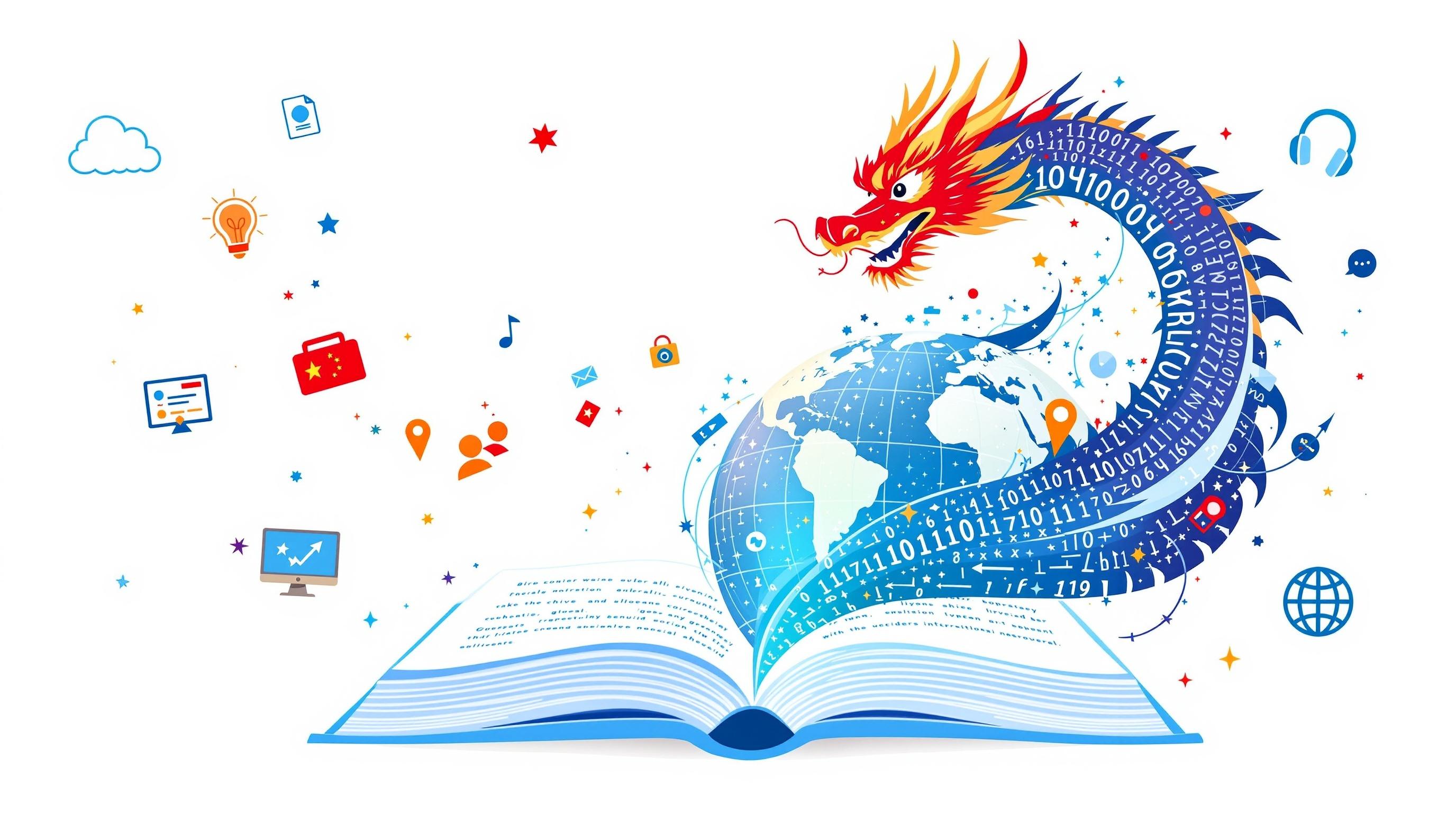
China's DeepSeek Enters the Fray with New Open-Source LLM
The global race for AI dominance is heating up, and a new contender has entered the fray: China's DeepSeek. With the release of DeepSeek-V3.1, an open-source LLM, the company is aiming to attract global developers and challenge the established Western AI labs. This move signals a significant shift in the international open-source AI movement.
DeepSeek-V3.1: A Hybrid Approach
DeepSeek-V3.1 isn't just another language model; it represents a strategic push towards hybrid inference and enhanced agent capabilities. This means it's designed not only to generate text but also to reason and interact more effectively with its environment. Imagine it like this: instead of just reciting facts, it can analyze a situation, devise a plan, and execute it – all powered by AI.
Key features of DeepSeek-V3.1 include:
Hybrid Inference: Combining different inference methods to optimize performance for various tasks.
Enhanced Agent Capabilities: Improved ability to interact with external tools and APIs.
Open-Source Availability: Allowing developers worldwide to access, modify, and contribute to the model.
The release of DeepSeek-V3.1 underscores the growing trend of open-source LLMs challenging proprietary models from companies like OpenAI and Google.
Challenging the Western Dominance
DeepSeek's ambition to attract global developers is a clear signal of its intent to compete directly with Western AI labs. By open-sourcing its technology, DeepSeek hopes to foster a community of contributors who can help improve and expand the model's capabilities. This strategy has proven successful for other open-source projects, and DeepSeek aims to replicate that success in the AI space. Tools like Hugging Face, a platform where you can find, explore, and use machine learning models, and even contribute to the open source community, are allowing companies to quickly scale up.
The Rise of International Open-Source AI
DeepSeek's release is just one example of the growing momentum behind the international open-source AI movement. As more countries and organizations invest in AI research and development, the demand for open and accessible AI technologies is increasing. This trend is driven by a desire to foster innovation, promote collaboration, and avoid over-reliance on a small number of powerful AI companies. This increased competition also means that the long-tail keyword "DeepSeek open-source LLM" is likely to become a popular search term for developers and researchers.
Increased Competition and Fragmentation
The entry of DeepSeek and other international players into the open-source AI arena is leading to increased competition and fragmentation of global AI standards. While competition can drive innovation, fragmentation can create challenges for interoperability and collaboration. It's becoming increasingly important for organizations to carefully evaluate the different AI technologies available and choose the ones that best meet their specific needs.
Consider the following:
Feature | DeepSeek-V3.1 | Other LLMs (e.g., ChatGPT) |
|---|---|---|
Open Source | Yes | No (typically) |
Hybrid Inference | Yes | Limited |
Agent Abilities | Enhanced | Basic |
Innovation and Shifting Standards
The emergence of DeepSeek as a significant player highlights the dynamic and evolving nature of the AI landscape. As more companies and countries invest in AI, we can expect to see even more innovation and competition in the years to come. This also brings a more fractured landscape of global AI standards. This ongoing evolution underscores the importance of staying informed about the latest developments in AI and adapting to the ever-changing landscape. Keeping up with AI News is more critical than ever.
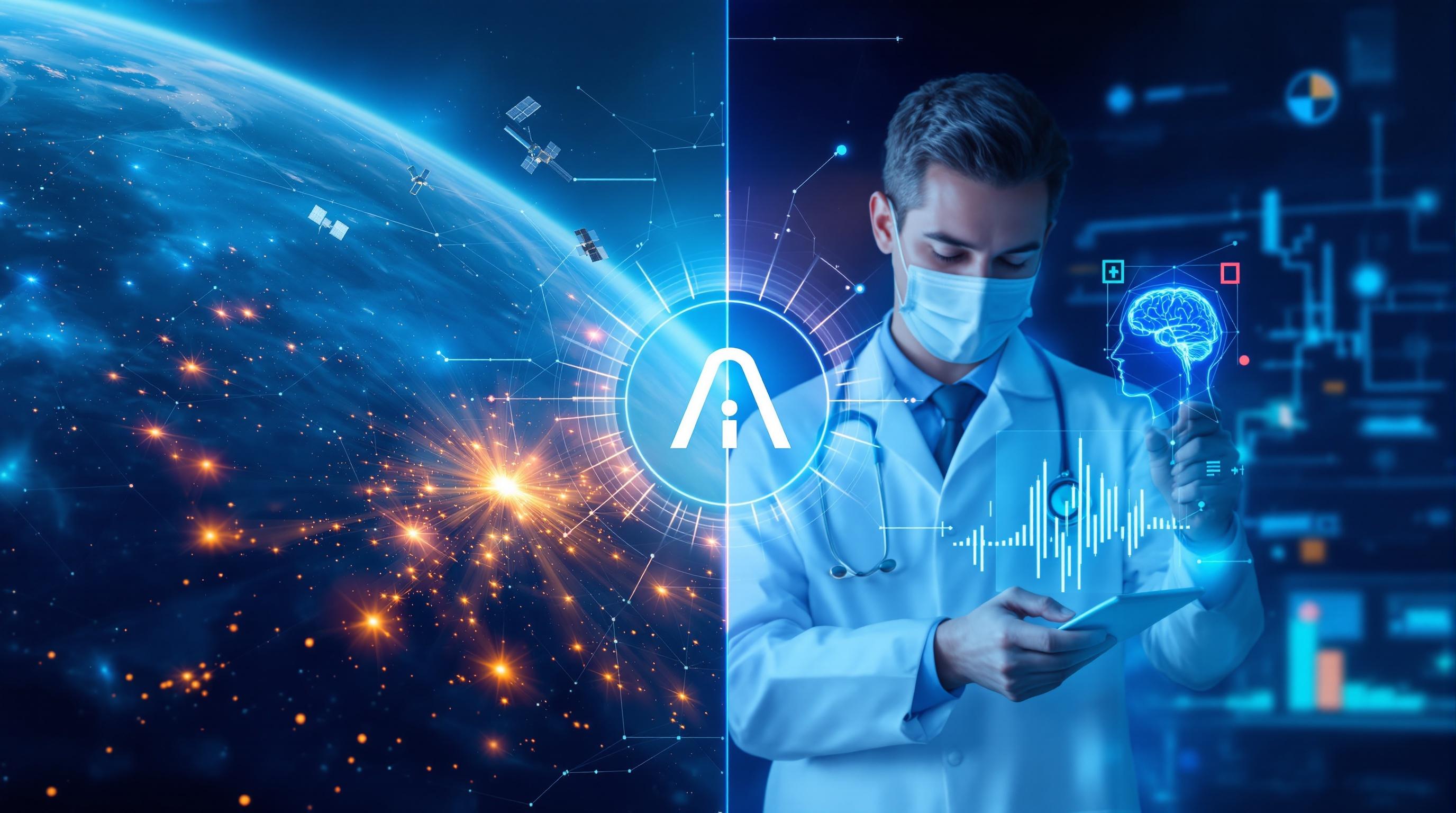
AI Advances in Science and Healthcare: From Space Weather to Medical Exams
AI is making waves far beyond chatbots and image generators, pushing into the realms of science and healthcare with groundbreaking applications.
IBM and NASA's "Surya": AI Tackles Space Weather
Imagine predicting solar flares with unprecedented accuracy. That's the promise of "Surya," the first AI foundation model for space weather forecasting, unveiled by IBM and NASA. This isn't just about cool tech; it's about protecting our infrastructure. Solar flares can disrupt satellites, power grids, and communication systems, leading to significant economic and societal impacts. Think of it like this: Surya is an early warning system, giving us time to prepare for incoming solar storms.
Surya was trained on nine years of solar data and is designed to predict solar flares, helping to mitigate potential disruptions on Earth. This development marks a significant step forward in using AI for scientific advancements.
Predictive Power: Surya analyzes vast datasets of solar activity to forecast when and where solar flares are likely to occur.
Infrastructure Protection: By providing early warnings, Surya helps protect critical infrastructure from the damaging effects of space weather.
Scientific Advancement: Surya showcases the potential of AI foundation models in advancing our understanding of space weather phenomena.
The implications of Surya are enormous. As our reliance on space-based technology grows, so does our vulnerability to space weather. AI tools like Surya provide a crucial layer of defense, ensuring the continued operation of essential services. This development also highlights the growing role of AI in space weather forecasting, a long-tail keyword that signals the increasing specificity of AI applications.
OpenEvidence Aces the Medical Licensing Exam
While Surya is watching the skies, another AI is making strides in healthcare. OpenEvidence achieved a perfect score on the U.S. Medical Licensing Exam, demonstrating the potential of AI to revolutionize medical education and practice. Think of it as having a tireless, always-available study partner that knows every detail of medical science.
This milestone is a testament to the rapid advancements in AI and its potential to assist doctors in diagnosing and treating patients more effectively.
AI's Expanding Role: Safety and Diagnostics
These examples are just the tip of the iceberg. AI models are rapidly moving into science and medicine, offering solutions that were once considered science fiction.
Essential safety systems: AI can analyze complex data to identify potential risks, helping to prevent accidents and improve safety protocols in various industries.
Diagnostic aids: AI algorithms can detect diseases earlier and more accurately, leading to better patient outcomes. For example, AI-powered image analysis can help radiologists identify subtle signs of cancer in medical scans. You might even use a tool like DeepAI, which provides AI infrastructure and tools, to build your own AI-powered diagnostic system.
AI is being used for drug discovery, identifying potential drug candidates and accelerating the development of new therapies. Tools like DeepMind AlphaFold are revolutionizing how we understand protein structures, which is crucial for drug development.
These real-world impacts are multiplying, demonstrating the transformative power of AI. As AI becomes more sophisticated, its ability to solve complex problems in science and healthcare will only continue to grow. This isn't about replacing human experts; it's about augmenting their abilities and creating a safer, healthier world. This exciting frontier is also covered in AI News, where you can stay updated on the latest breakthroughs.
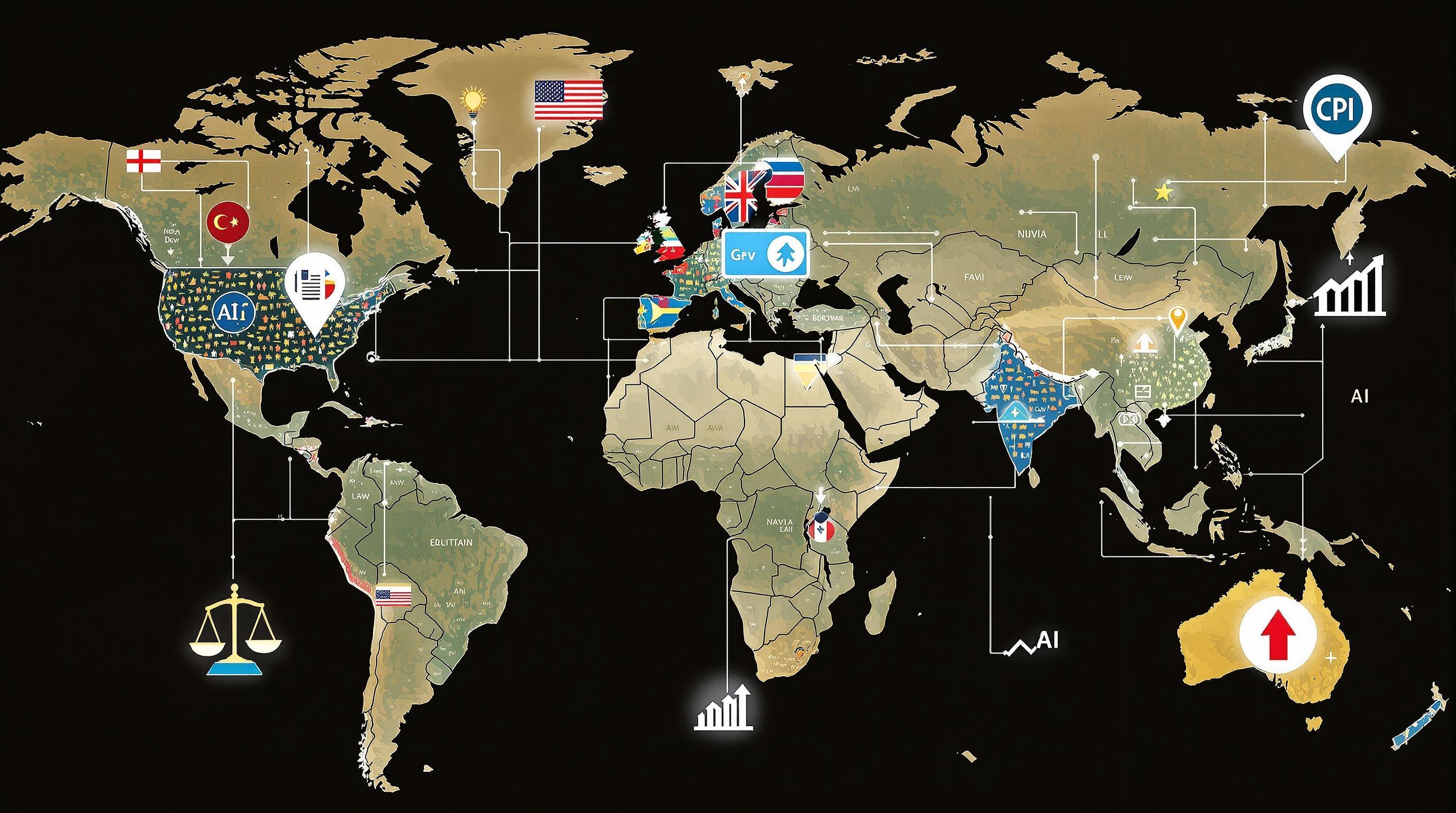
Global Policy Responds: AI Regulation and National Strategies Take Center Stage
As AI technology continues its rapid evolution, global policy is scrambling to keep pace, resulting in a flurry of activity around AI regulation and national strategies. This month alone has seen significant developments, indicating an accelerating trend towards formalizing the rules of engagement for this transformative technology.
Global Policy Responses
Indonesia, recognizing the importance of a strategic approach, is actively seeking public input on its National AI Roadmap through Komdigi. This signals a proactive effort to align AI development with national interests and societal values. Public consultations like these are crucial for ensuring that AI policies reflect a broad range of perspectives and address potential concerns. The goal is to foster innovation while mitigating risks, a balancing act that many nations are now attempting.
Meanwhile, in the United States, the White House has convened industry leaders to engage in discussions focused on AI safety and regulatory frameworks. These high-level meetings are indicative of the government's commitment to establishing guardrails for AI development and deployment. The discussions likely covered a range of topics, including algorithmic bias, data privacy, and the potential for misuse of AI technologies. It's a crucial step towards creating a regulatory landscape that promotes responsible innovation.
Public Perception and Concerns
The accelerating pace of AI development is not without its anxieties. A recent survey revealed that a significant 61% of Americans are concerned about AI-driven job loss. This widespread fear underscores the need for policymakers to address the potential economic and social impacts of AI. Retraining programs, social safety nets, and policies that promote human-AI collaboration are all potential avenues for mitigating these concerns. The conversation around AI News must include realistic assessments of both opportunities and potential disruptions.
The rise of AI tools presents both incredible opportunities and real challenges. As AI integrates into more aspects of our lives, we need to address public concerns about job displacement and ensure a just transition.
The Regulatory Race is On
The increasing activity on the policy front indicates that the regulatory pace is indeed accelerating globally. Countries around the world are grappling with how to best govern AI, with some focusing on specific applications like autonomous vehicles or facial recognition, while others are taking a more comprehensive approach. The EU's AI Act, for example, is a landmark piece of legislation that aims to establish a comprehensive legal framework for AI across the European Union. Navigating this complex and evolving regulatory landscape will be crucial for businesses and organizations operating in the AI space.
Bridging the Gap: Technology and Policy
Ultimately, the effectiveness of any AI regulation hinges on its ability to keep pace with the rapid advancements in the field. National AI strategies and public debate must be agile and informed, constantly adapting to new developments and insights. This requires ongoing dialogue between policymakers, researchers, industry experts, and the public. Tools like Perplexity, an AI-powered search engine, can assist in staying up-to-date with the latest research and policy discussions.
As AI continues to reshape our world, the interplay between technology and policy will become increasingly critical. By fostering open dialogue, promoting responsible innovation, and addressing public concerns, we can harness the transformative potential of AI while mitigating its risks. As we look towards the future, one thing is clear: the conversation around AI regulation is just beginning, and it will require ongoing attention and collaboration from all stakeholders. Studying resources in our Learn section will help you be prepared for these rapid advancements.
🎧 Listen to the Podcast
Hear us discuss this topic in more detail on our latest podcast episode: https://creators.spotify.com/pod/profile/bestaitools/episodes/The-AI-Revolution-Accelerates-Breakthroughs--Billions-in-Investment--and-Global-Uncertainty---Daily-AI-News-22--August-2025-e376159
Keywords: AI, Artificial Intelligence, GPT-5, OpenAI, AI infrastructure, Large Language Models, LLM, Context Window, AI regulation, Enterprise AI, Generative AI, AI in Healthcare, AI in Science, AI job displacement, National AI strategy
Hashtags: #AI #ArtificialIntelligence #GPT5 #MachineLearning #TechNews
For more AI insights and tool reviews, visit our website https://best-ai-tools.org, and follow us on our social media channels!
Website: https://best-ai-tools.org
X (Twitter): https://x.com/bitautor36935
Instagram: https://www.instagram.com/bestaitoolsorg
Telegram: https://t.me/BestAIToolsCommunity
Medium: https://medium.com/@bitautor.de
Spotify: https://creators.spotify.com/pod/profile/bestaitools
Facebook: https://www.facebook.com/profile.php?id=61577063078524
YouTube: https://www.youtube.com/@BitAutor
Recommended AI tools
Sora
Video Generation
Create stunning, realistic videos and audio from text, images, or video—remix and collaborate with Sora, OpenAI’s advanced generative video app.
Perplexity
Search & Discovery
Clear answers from reliable sources, powered by AI.
DeepSeek
Conversational AI
Efficient open-weight AI models for advanced reasoning and research
Freepik AI Image Generator
Image Generation
Generate on-brand AI images from text, sketches, or photos—fast, realistic, and ready for commercial use.
Windsurf (ex Codium)
Code Assistance
Tomorrow’s editor, today. The first agent-powered IDE built for developer flow.
Canva Magic Studio
Design
All the AI magic of Canva, in one place.

